Exploring Zoom Lenses for iPhone Photography


Product Overview
Intro to Zoom Lenses for iPhone Photography
In the realm of mobile photography, the integration of zoom lenses represents a significant leap forward in enhancing the capabilities of iPhone cameras. Unlike traditional fixed lenses, zoom lenses afford photographers the ability to adjust the focal length, achieving closer shots without sacrificing image quality. This flexibility is especially vital for those aiming to capture a broader variety of subjects, from distant landscapes to intimate portraits.
Key Features and Specifications
Zoom lenses for iPhones come with a range of specifications that cater to various user needs. Popular products like Moment's 58mm Telephoto Lens provide a versatile focal length, allowing users to zoom in more closely than the standard iPhone lens. This particular lens features a high-quality optical design, ensuring minimal distortion and exceptional sharpness. Other noteworthy features include:
- Compatibility: Designed to attach seamlessly to various iPhone models, providing broad usability.
- Lightweight Construction: Most zoom lenses are crafted from durable yet lightweight materials, making them portable for on-the-go shooting.
- Coating Technologies: Many products include special coatings to reduce glare and enhance contrast in photos.
Design and Aesthetics
The design of these lenses usually complements the sleek aesthetic of the iPhone. They are often compact and visually unobtrusive, fitting well with the iPhone's design philosophy. Some manufacturers offer customizable lens mounts, ensuring a snug fit while allowing for easy detachment. The aesthetic appeal serves to enhance the overall user experience while maintaining a professional look.
Performance and User Experience
Performance Benchmarks
When discussing performance, it's essential to highlight the resolution and clarity achieved with zoom lenses. For instance, lenses from brands like Kenko provide excellent optical performance, ensuring that images retain their quality even at full zoom. Tests have shown that these lenses can outperform built-in iPhone lenses for telephoto shots, proving especially beneficial in low light conditions.
User Interface and Software Capabilities
Using zoom lenses often requires additional apps to fully leverage the cameras' capabilities. Applications like Halide or Adobe Lightroom enhance manual control over various settings, enabling users to customize their shooting experience based on photography type. These software solutions offer features such as manual focus, exposure compensation, and advanced histogram displays.
User Experiences and Feedback
Feedback from users indicates a pronounced satisfaction with the ability to capture images that were previously hard to get with standard lenses. Many report improved creativity and scope in their photography, allowing personalization and adaptability to various shooting environments. However, some users note the importance of learning curve, as mastering manual settings can initially prove challenging.
Tips and Tricks
How-to Guides and Tutorials
To enhance the use of zoom lenses on iPhones, consider the following practical tips:
- Stabilization: Use a tripod to avoid motion blur, especially at higher zoom levels.
- Lighting: Take advantage of natural light whenever possible to improve image quality.
Hidden Features and Functionalities
Often, zoom lenses include features that go unnoticed. For example, some models allow users to attach filters for additional effects, such as reducing glare or enhancing color saturation. Exploring user manuals and online forums can reveal these hidden gems.
Troubleshooting Common Issues
If clarity declines or distortion occurs, clean the lens carefully with a microfiber cloth. Ensure no dust or fingerprints interfere with the optical quality. Additionally, verify that the lens is securely attached to avoid any misalignment issues.
Latest Updates and News
Recent Developments in Software Updates
The software landscape for iPhone photography continues to evolve. Recent updates have introduced new processing algorithms that enhance low-light performance and noise reduction. These advancements complement the capabilities of zoom lenses, allowing users to achieve remarkable results under challenging conditions.
Industry News and Rumors Surrounding Upcoming Products
As manufacturers innovate, rumors abound regarding new lens technologies. Early reports suggest an upcoming release of an advanced telephoto lens that could offer increased zoom capabilities. Staying updated through tech news platforms like Reddit is advisable for enthusiasts looking to remain informed.
Events and Announcements from Apple
Apple frequently holds events where new products and updates are unveiled. Engaging with livestreams or recaps on platforms like Facebook can provide valuable insights into how these innovations integrate with existing photography tools, including zoom lenses.
"The ability to harness advanced photography tools like zoom lenses transforms the iPhone into a powerful creative device, enabling users to capture stunning images that rival traditional cameras."
Preamble to Zoom Lenses for iPhones
The advent of zoom lenses has significantly transformed the landscape of mobile photography, particularly for iPhone users. This section delves into the relevance of zoom lenses, examining their fundamental contributions to enhancing photographic capabilities.
Zoom lenses empower photographers to capture images from various distances without compromising quality. They provide flexibility, allowing users to take close-ups of distant subjects or to achieve expansive landscape shots with ease. This versatility is invaluable for capturing a wide range of scenarios—from dynamic street photography to serene nature scenes.
Moreover, the integration of zoom lenses can elevate the overall photography experience. Many iPhone users might not fully leverage the potential of their device's camera. By utilizing supplementary lenses, they can explore new creative avenues and achieve results that are typically reserved for professional photography. This introduction of zoom lenses can help bridge the gap between casual snapshots and more artfully composed images.
In terms of technical aspects, zoom lenses can vary greatly in their specifications and features. Understanding these differences is essential for making an informed choice. Factors such as aperture size, focal length, and build quality significantly affect image output, and should thus be carefully considered.
Zoom lenses for iPhones serve not only to enhance the photographic capabilities of the device but also to encourage a deeper engagement with the art of photography.
As the mobile photography scene continues to evolve, zoom lenses will likely play an increasingly prominent role. Their potential to adapt to various styles and preferences will also be considered as part of a broader discussion on future trends in mobile photography. In the subsequent sections, a more in-depth exploration of the types of zoom lenses available and their specific functionalities will be discussed.
Understanding Mobile Photography

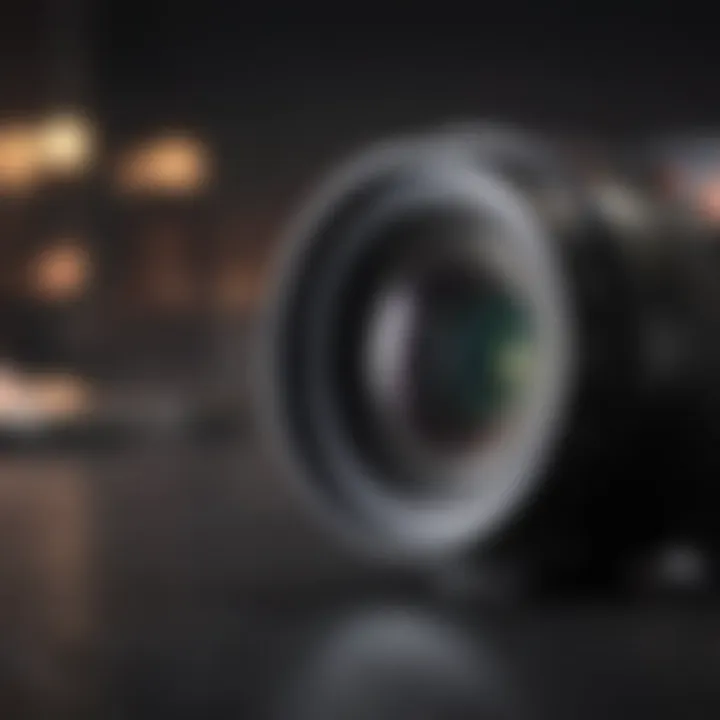
Mobile photography has transformed the way we capture moments. It allows individuals to document their lives in real-time, leveraging the powerful technology embedded in devices like the iPhone. Understanding mobile photography is crucial in the context of using zoom lenses. It highlights the strengths and limitations of the equipment while also emphasizing the importance of technique and artistry in photography.
The significance of mobile photography lies in its accessibility. With the advancement of smartphone cameras, anyone can become a photographer. This democratization allows creativity to flourish, independent of formal training or expensive equipment. Moreover, as iPhone users explore the capabilities of their devices, they become more aware of potential enhancements offered by accessories such as zoom lenses.
When considering mobile photography, factors such as composition, lighting, and perspective are fundamental. A zoom lens can substantially improve image quality. It allows users to take detailed shots without compromising pixel integrity. Also, understanding how to adjust various settings within the iPhone camera is vital for maximizing the benefits of additional lenses. Users should familiarize themselves with features such as focus modes and exposure settings to take full advantage of zoom capabilities.
In summary, mobile photography is an evolving field. Understanding its principles will enable iPhone users to make informed decisions about the tools they employ, including zoom lenses. It encourages photographers to push boundaries and to explore the extensive possibilities of their iPhones.
Basics of iPhone Camera Functions
The iPhone camera is designed with multiple functionalities to cater to diverse photography needs. There are several key components that users should understand:
- Camera Resolution: Higher resolution leads to clearer images. The iPhone often incorporates advanced sensors that capture more detail.
- Focus and Exposure: The iPhone allows users to tap on the screen to focus on a specific object, adjusting exposure accordingly. Understanding how to manage these settings can dramatically change an image.
- HDR (High Dynamic Range): This feature captures more detail in both highlighted and shadowed areas of a photo. Users need to understand when to turn it on or off for best results.
- Optical Image Stabilization: It helps reduce blurriness caused by hand movements or shaking. Knowing how to utilize this can mitigate challenges in low-light conditions.
Each of these functions contributes to increasing the photographic capabilities of the device. A solid grasp of these basics also prepares one for using zoom lenses effectively.
Evolution of iPhone Photography
Since the release of the first iPhone, smartphone photography has undergone remarkable changes. The introduction of the iPhone 3GS marked a turning point. This model featured a 3-megapixel camera and the ability to record video. As newer models emerged, enhancements were made in sensor technology and computational photography, seriously changing how images are captured.
The iPhone 6 and subsequent models, including iPhone 7, brought advancements such as larger sensors and improved image processing capabilities. The incorporation of dual-camera systems in later versions, such as the iPhone 7 Plus, enhanced optical zoom, giving users more creative flexibility. Additionally, the rise of social media platforms has influenced photographic trends, creating a demand for higher quality images.
Looking at the latest models, such as the iPhone 14, the features become even more impressive. With capabilities such as Night Mode and Smart HDR 4, photographers can capture stunning photographs in various conditions. This evolution reflects not just technological advancements but also the shifting perspective of photography, paving the way for more users to engage actively and creatively with mobile photography.
Types of Zoom Lenses Available for iPhones
In the realm of mobile photography, understanding the different types of zoom lenses available for iPhones is vital. The choice of zoom lens can dramatically affect the quality of images captured, providing photographers with various options. Knowing these types helps users make informed decisions based on desired outcomes and specific photography scenarios.
Optical vs Digital Zoom
Optical zoom refers to the lens’s ability to move physically to magnify an image without any loss of quality. When using optical zoom, the lens changes its focal length, allowing for a clearer, undistorted image. This is particularly important for photographers who value image integrity. For example, a telephoto lens would use optical zoom to bring distant subjects in closer detail.
In contrast, digital zoom simply crops the image to simulate zooming in. This method enlarges a portion of the photo, which can lead to a significant reduction in image quality. Therefore, while digital zoom can be handy for quick adjustments, it often limits the detail captured in the final photo. Users should be cautious of relying on this feature for critical shots, as it can detract from the overall image fidelity.
Telephoto Lenses
Telephoto lenses are a popular choice for mobile photographers who often capture images from a distance. These lenses allow for closer framing of subjects that are far away, making them suitable for wildlife, sports, or street photography. Telephoto lenses can enhance detail significantly, revealing textures and elements invisible to the naked eye.
Users should consider the specifications of telephoto lenses when choosing one. The range of focal lengths can vary. Longer focal lengths are usually best for isolating subjects against a softer background. These lenses also offer greater depth of field options, which can be beneficial in artistic photography.
Wide-Angle and Macro Lenses
Wide-angle lenses expand the field of view, making them ideal for landscape, architecture, and group photography. This type of lens allows users to capture more of the scene within the frame, offering dynamic perspectives. However, it can also introduce distortion at the edges of the image. Careful composition is crucial to mitigate this effect.
Macro lenses serve a different purpose. They enable photographers to capture extreme close-ups of small subjects, such as flowers or insects. This type of lens reveals fine details often overlooked, making it a favorite among nature photographers. When selecting a macro lens, the minimum focusing distance plays a critical role, as it determines how close you can get to the subject without losing focus.
The choice of lens plays a fundamental role in the brandish of an iPhone’s camera capabilities. Understanding these various types enhances your photographic experiences and outcomes.
Key Features to Consider When Selecting a Zoom Lens
Choosing the right zoom lens for iPhone photography can greatly influence the overall image quality and versatility of your work. There are several key features you should consider. These features play a significant role in understanding how a lens will perform in various scenarios. The importance of these aspects cannot be overstated, as they determine not only the quality of your photos but also how adaptable the lens is to different photographic needs.
Aperture Size and Quality
The aperture size is a critical feature of any lens, including those designed for iPhones. The aperture controls how much light the lens accepts. A larger aperture (indicated by a smaller f-number) allows more light to enter, which is particularly beneficial in low-light situations. For instance, an aperture of f/2.8 can make a significant difference when you’re shooting at dusk or indoors. Conversely, a small aperture can lead to less light and more noise in your images.
In addition to size, the quality of the lens itself is vital. Higher-quality lenses often utilize better glass and coatings, which reduce lens flare and improve color accuracy. Choosing a lens with a good reputation in optical quality can greatly enhance your photography experience.
Focal Length Ranges
Focal length determines how zoomed in or out your images will appear. Lenses come in various focal lengths, and each serves a different purpose. For example, a telephoto lens, with a longer focal length, is excellent for capturing distant subjects with clarity. This is ideal for wildlife or sports photography. On the other hand, a wide-angle lens is suitable for landscapes and architecture, as it captures more of the scene in one shot.
Understanding the focal length range of a zoom lens is crucial. Many zoom lenses today offer a range of focal lengths, allowing photographers to adapt to changing situations without needing multiple lenses. When selecting a lens, consider what type of photography you enjoy most, as this will inform your choice.
Build Quality and Design
Lastly, the build quality and design of the lens should not be overlooked. If you plan to take your iPhone and lens on outdoor adventures, durability becomes essential. Lenses that are weather-sealed or made with more robust materials can withstand harsher conditions.
The design also affects usability. Lenses that are too heavy or cumbersome may diminish the portability that makes iPhone photography appealing in the first place. Look for lenses that strike a comfortable balance between weight, size, and functionality.
In summary, understanding the key features such as aperture size, focal length, and build quality will help you make an informed decision when selecting a zoom lens for your iPhone. These elements directly influence not only the performance but also the versatility you will have in capturing the world through your lens.
"Investing time in understanding these aspects will yield noticeable improvements in your iPhone photography efforts."
Compatibility with Different iPhone Models
The compatibility of zoom lenses with various iPhone models is essential for maximizing the potential of mobile photography. It influences the usability and functionality of the lens, affecting the overall photographic experience. Understanding this compatibility helps users make informed decisions, ensuring that the accessories they choose will work seamlessly with their specific devices.
When selecting a zoom lens, the first point to consider is the model of the iPhone. Different versions of the iPhone have unique camera configurations and capabilities. For example, the iPhone 13 Pro and iPhone 14 Pro come with advanced camera systems including multiple lenses, which can enhance the effectiveness of additional zoom lenses.
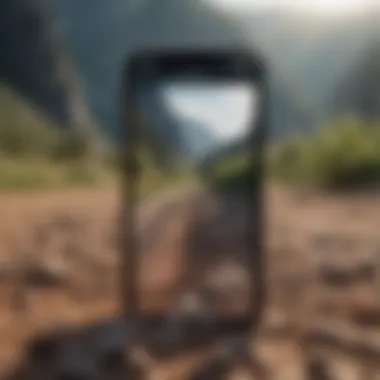
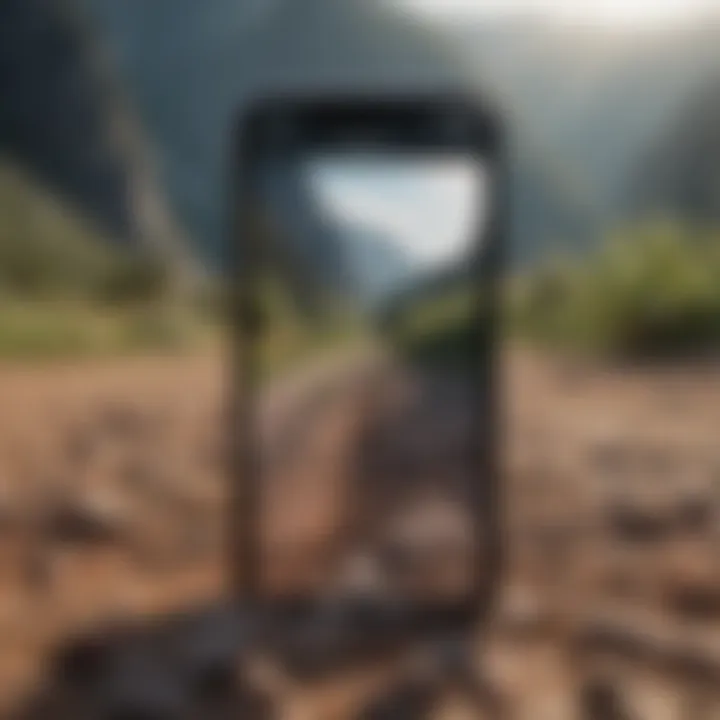
Another element to consider is the mounting mechanism. Some lenses use clip-on systems while others may require specific cases, which might not be universal across all models. Hence, identifying what type of mount is supported by both the lens and the iPhone model is vital. A mismatch could lead to instability while shooting, compromising image quality.
Moreover, understanding software compatibility is essential. Some zoom lenses provide their own app controls, allowing for greater customization and features that integrate with the phone's native camera capabilities. For instance, lenses designed to pair with the iPhone's portrait mode can exploit the software’s depth-of-field effects, enabling photos that reflect professional standards.
"The choice of a zoom lens should match your iPhone model to unlock its true photographic potential, ensuring that you can shoot high-quality images effortlessly."
Assessing Compatibility Factors
To assess compatibility, start by checking the specifications of your iPhone model. Each model sold often has detailed technical specifications available online from Apple. This should inform you about the camera's capabilities, such as maximum aperture and built-in features.
Next, consider the construction of the lens itself. Not all lenses fit all phones due to size, shape, and manipulation requirements. While many zoom lenses claim universality, testing compatibility firsthand can provide clarity.
It also helps to look for user reviews. Insights from others who own the same model can reveal common issues or successes with specific lenses. Social media platforms like Reddit or forums can be valuable resources for this information.
Popular Zoom Lens Brands for iPhone
There are numerous brands recognized for their quality zoom lenses designed for iPhones.
- Moment offers high-quality lenses that are known for their optical performance. Their telephoto and wide-angle lenses are popular among professional photographers.
- Olloclip provides versatile solutions, with lenses that are easy to switch and perfect for casual users looking for the flexibility in mobile photography.
- Sandmarc focuses on adventure and outdoor photography, with lenses built to withstand various environments.
- Zeiss is well-known in the industry for high-grade optics, offering a premium experience for those willing to invest.
Each of these brands highlights unique aspects of lens design, ensuring users have numerous choices. Ultimately, finding the right lens will depend on your specific photographic needs and the compatibility with your iPhone model.
Advantages of Using Zoom Lenses
Zoom lenses are pivotal in enhancing the versatility and quality of iPhone photography. These lenses allow photographers to expand their creative potential while capturing images in different contexts. This section discusses two primary advantages of using zoom lenses: enhanced image quality and versatility in photography.
Enhanced Image Quality
One of the standout benefits of zoom lenses is their ability to improve image quality significantly. Higher-quality zoom lenses can offer superior optics, which directly impacts the fidelity of photos. These lenses help reduce distortion, chromatic aberrations, and other image artifacts.
Moreover, a well-built zoom lens can provide a wider aperture, enabling better performance in low-light conditions. This characteristic drastically improves the depth of field and highlights details that standard iPhone lenses may miss. Users can achieve sharp, vibrant images that capture the essence of the scene, even at greater distances.
Key Considerations for Image Quality:
- Optical Design: Look for lenses that utilize advanced glass elements and coatings to minimize glare and ensure clarity.
- Aperture Size: A larger aperture can enhance low-light performance and create attractive blurred backgrounds.
"Capturing stunning details at various focal lengths is now within reach for everyday photographers."
Versatility in Photography
The versatility offered by zoom lenses is another crucial advantage, particularly for those who wish to explore different styles or subjects in their photography. Zoom lenses allow the user to transition between wide-angle, telephoto, and macro settings without changing the lens frequently. This feature is especially useful during events or outings where time and convenience are factors.
Creatives can engage in various types of photography, from landscapes to portraits, all while utilizing a single accessory. For instance, a telephoto zoom lens can capture distant subjects with clarity, while a macro lens can draw intricate details from close-up shots. Thus, photographers can easily adapt to diverse shooting situations without compromising quality.
Considerations for Versatility:
- Type of Zoom Lens: Different zoom lenses cater to various needs. Assess what kind of photography you enjoy to choose the right lens.
- Weight and Portability: Opt for lenses that maintain a balance between versatility and ease of use, ensuring you can carry them comfortably while shooting.
Limitations and Drawbacks
Understanding the limitations and drawbacks of zoom lenses for iPhone photography is crucial for users who want to maximize their photography experience. While these lenses enhance capabilities, they also introduce challenges that can affect their overall effectiveness and ease of use.
Size and Portability Issues
One significant drawback of using zoom lenses is their size. Many zoom lenses are relatively bulky compared to the sleek profile of an iPhone. This added bulk can create issues for those wanting a compact setup. Larger lenses may hinder convenient storage and transport, especially for casual or impromptu shooting. For travelers or everyday users, this may lead to leaving the lens behind altogether, diminishing its potential utility.
In addition, attaching a zoom lens can make the iPhone cumbersome. Users who prioritize mobility might find it difficult to carry their enhanced device comfortably. Beyond personal comfort, there is the challenge of finding suitable bags or cases designed to hold both the iPhone and the attached lens securely.
To balance this issue, users might consider the tradeoff between portability and enhanced functionalities that a zoom lens offers. It is important to determine whether the benefits justify the increased size, especially if shooting outdoors or during travel, where ease of access and speed can be critical.
Price Considerations
Another notable consideration is the price of quality zoom lenses for iPhones. These lenses can range significantly in cost, with high-end options providing better optical performance but often at a steep price. Users new to mobile photography might need to weigh the investment against their actual need, especially if they are uncertain about how often they will use the zoom functionality.
Entry-level zoom lenses may be more accessible but might not offer the clarity or features that high-end counterparts provide. Thus, budget constraints can limit access to superior lens options. Users may find themselves navigating the landscape of brands and models, trying to find a compromise between cost and quality.
For those who view photography as a profession or serious hobby, investing in a robust zoom lens might be justified. However, casual photographers might resent the need to spend considerable amounts without guaranteed satisfaction. Evaluating factors such as lens construction, glass quality, and warranty can aid in making an informed decision.
"Understanding the tradeoffs involves careful consideration of each factor impacting your mobile photography setup."
In summary, while zoom lenses offer significant potential for enhancing iPhone photography, users should be aware of the size and portabilty concerns, as well as the potential financial implications of their choices. A thorough evaluation of personal photography goals and fitting a lens into those ambitions will lead to more satisfactory outcomes.
Practical Usage Tips for iPhone Zoom Lenses
The efficacy of zoom lenses in iPhone photography depends greatly on proper usage. Knowing how to leverage these lenses can greatly enhance the quality of images captured. Practical usage tips help users understand not only the technical aspects but also the conditions under which the performance of the lens can be optimized. By incorporating these techniques, photographers can maximize the potential of their zoom lenses, resulting in sharper images and more impactful compositions.
Stabilization Techniques
Stabilization is a critical aspect of photography, especially when using zoom lenses. The increased focal length amplifies the effects of any unintentional camera movements. Here are several techniques to ensure steady shots:
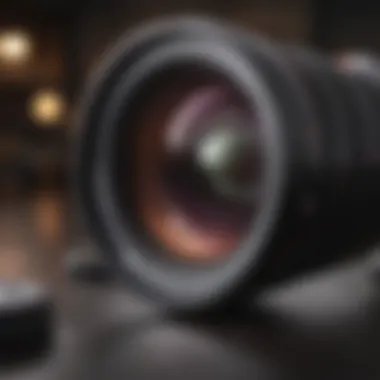
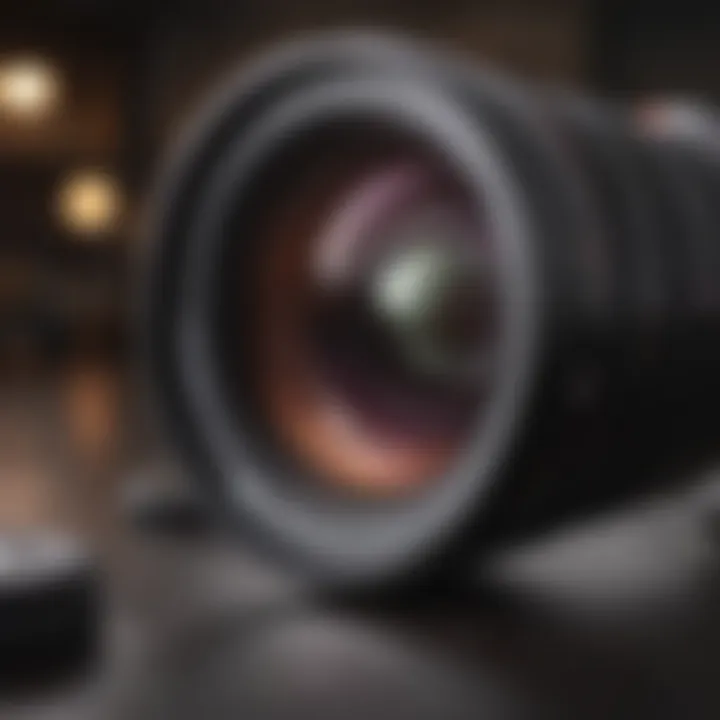
- Use a Tripod: A sturdy tripod provides the most reliable stabilization, particularly in low-light conditions or when capturing distant subjects.
- Apply Image Stabilization: Many modern zoom lenses come equipped with some form of image stabilization. Activating this feature can help mitigate blurriness caused by slight movements.
- Keep Your Elbows Tucked In: If a tripod is not available, keeping elbows against the body helps create a more stable stance while shooting.
- Utilize a Stable Surface: Resting the camera on a flat surface, such as a table or a wall, can help reduce vibrations.
Focusing on these stabilization techniques can lead to significantly improved image quality, especially when zooming in on distant subjects. Precision in stabilization is essential for getting the best results from zoom lenses.
Lighting Considerations
Lighting plays a vital role in photography. Its effects are compounded when using zoom lenses, which can reduce the amount of light reaching the sensor. Here are some considerations to help achieve the best lighting:
- Natural Light: Whenever possible, use natural light. The golden hour, just after sunrise or before sunset, can produce warm and flattering light.
- Avoid Harsh Midday Sun: Shooting in harsh daylight might lead to overexposed images. If necessary, use shade or cloud cover to diffuse direct sunlight.
- Use a Reflector: If shooting portraits or details, reflectors can bounce light onto the subject, enhancing brightness without introducing additional lights.
- Experiment with ISO Settings: Adjusting the ISO setting on your iPhone camera can improve low-light performance when using zoom lenses. However, be cautious since increasing ISO too much may introduce noise.
Paying close attention to lighting conditions will allow photographers to capture images with better depth and color accuracy. Successful iPhone photography using zoom lenses requires an understanding of various elements that affect image quality.
"Good lighting is half the photography. Understanding light is key to unlocking the full potential of any camera setup."
With these practical usage tips, photographers can confidently approach their iPhone zoom lenses and create compelling images.
Maintaining Your Zoom Lens
Taking care of your zoom lens is vital for preserving its functionality and performance. A well-maintained lens can enhance your iPhone photography by ensuring clear and sharp images while also prolonging the lifespan of the equipment. Neglecting maintenance can lead to issues such as image distortion, dust buildup, and reduced optical quality. Therefore, understanding proper cleaning, care, and storage techniques is essential.
Cleaning and Care Tips
Keeping your zoom lens clean is crucial. Dust and smudges can lead to poor image quality. Here are some effective cleaning methods:
- Use a microfiber cloth: A soft microfiber cloth can gently remove fingerprints and dust without scratching the lens surface. Avoid using regular tissues or paper towels as they may cause damage.
- Lens cleaning solution: If the lens has stubborn spots, apply a few drops of lens cleaning solution to the cloth, never directly onto the lens. Wipe in a circular motion from the center outward.
- Avoid moisture: Excess moisture can seep into the lens casing, damaging internal components. Always ensure the lens is dry before using it.
Tip: Regularly check for dust or debris on the lens, especially after outdoor shoots.
Storage Recommendations
Proper storage of your zoom lens can prevent damage and wear. Here are some best practices:
- Use a dedicated case: Invest in a quality lens case that fits securely. This will protect against scratches and impacts when not in use.
- Keep in a dry place: Humidity and moisture can be harmful. Store your lens in a cool, dry area to prevent mold growth.
- Avoid extreme temperatures: Do not expose your lens to extreme heat or cold, which can distort the lens elements and cause malfunctions.
By following these cleaning and storage tips, photographers can enjoy the benefits of their zoom lenses for many years. Maintenance is a small effort that yields significant returns in image quality and equipment longevity.
Future Trends in Zoom Lens Technology
The exploration of future trends in zoom lens technology is critical for understanding how photography on mobile devices, especially iPhones, will evolve. As the demand for higher image quality and versatility increases among users, manufacturers are adopting innovative techniques, enhancing overall user experience. These trends not only reflect the technological advancements but also address the changing needs of photographers.
Advancements in Lens Design
One significant area of progress is in lens design itself. Manufacturers are focusing on creating lenses that are not only compact but also have superior optical performance. Enhanced materials are being used to reduce distortion and improve clarity. Furthermore, newer coating technologies minimize glare and improve light transmission, allowing for better performance in various lighting conditions.
Multi-element configurations in lens design are becoming common, which support higher magnification without losing sharpness. This is especially useful for iPhone users who want to achieve professional quality images with ease.
A noteworthy point is the development of modular lens systems. These systems allow users to swap lenses easily according to their photography needs. This adaptability makes it possible to capture a wider range of subjects effectively, from distant landscapes to detailed close-ups.
Integration with AI and Machine Learning
Artificial Intelligence (AI) and Machine Learning are playing an increasing role in lens technology. iPhone cameras are already using these technologies for features like portrait mode and night mode. With advancements in AI, the integration into zoom lens functionality promises enhanced automatic scene recognition, allowing the phone to adjust settings dynamically for optimal image quality.
Moreover, image processing powered by machine learning algorithms can analyze user preferences and shooting patterns. As a result, the device can offer tailored suggestions for lens usage, ensuring that users make the most out of their photography experience.
AI can help in reducing the post-processing workload. Advanced algorithms will assist in real-time editing as the photo is taken, improving the final output significantly. This will be particularly beneficial for those who desire high-quality images without intensive editing skills.
Epilogue
In this article, we explored the multifaceted world of zoom lenses for iPhones, emphasizing their role in enhancing mobile photography. Understanding zoom lenses becomes essential as mobile photography continues to gain significance. With a growing number of users embracing their smartphones as primary cameras, the potential of zoom lenses cannot be overlooked.
Key Benefits of Zoom Lenses
Zoom lenses improve image quality, allowing for more detailed shots. They offer versatility for various photography styles—portraits, landscapes, and even wildlife photography. Users can adapt to different situations with ease, capturing images that were once difficult or impossible to achieve without professional equipment.
However, while the advantages are considerable, there are also limitations. Size and portability can become issues, especially with larger telephoto lenses. Additionally, pricing can vary significantly, making it crucial for users to evaluate their needs and budget before making a purchase.
By following the tips provided in the earlier sections, users can make informed decisions about selecting, using, and maintaining zoom lenses. Staying current with trends and advancements in technology will also ensure that they can maximize their photography potential over time.
In summary, the integration of zoom lenses into iPhone photography profoundly impacts the way users capture images. As mobile technology evolves, so does the opportunity for innovation in creative expression through photography. For those who seek to enhance their photography with iPhones, understanding and leveraging zoom lenses is vital for achieving impressive results.
"The art of photography is not just in capturing a moment but in elevating it with the right tools."
For further exploration, readers can refer to resources on mobile photography and related communities on Reddit, as well as comprehensive guides available on platforms such as Wikipedia.
Further Reading
Further reading on the subject of zoom lenses for iPhone photography holds significant value for both novices and experienced users. It serves as an extension of the concepts discussed in this article, allowing readers to delve deeper into the world of mobile photography.
Exploring various resources enriches knowledge about lenses, camera settings, and photography techniques. Access to diverse perspectives can inspire creativity and motivate experimentation with different styles of photography. Understanding technical aspects from multiple sources can aid in better lens selection and application, making the photography experience more fulfilling.
Some important aspects of further reading include:
- Technical Guides: Technical articles and guides offer insights into the mechanics of zoom lenses. They explain how focal lengths affect image capture and detail the advantages of various aperture sizes.
- User Reviews: Engaging with user experiences can provide practical feedback. Reviews often discuss performance issues, compatibility nuances, and personal anecdotes that highlight real-life application.
- Tutorials and Workshops: Participating in online tutorials or workshops can considerably enhance one’s skills. Practical lessons on photography composition and advanced editing techniques help to refine user proficiency when utilizing zoom lenses.
- Community Forums: Websites like Reddit and photography forums facilitate discussions among enthusiasts. These platforms allow users to share knowledge about gear, including their thoughts on specific brands and lenses.
- Updates on Technology Trends: With technology evolving, staying updated on upcoming zoom lens innovations is important. Knowledge about future advancements can help in making informed purchases and keeping skills current.
"Photography is a way of feeling, of touching, of loving. What you have caught on film is captured forever… It remembers little things, long after you have forgotten everything." – Aaron Siskind
By exploring these various avenues, users can elevate their mobile photography skills, unlocking new creative possibilities.



